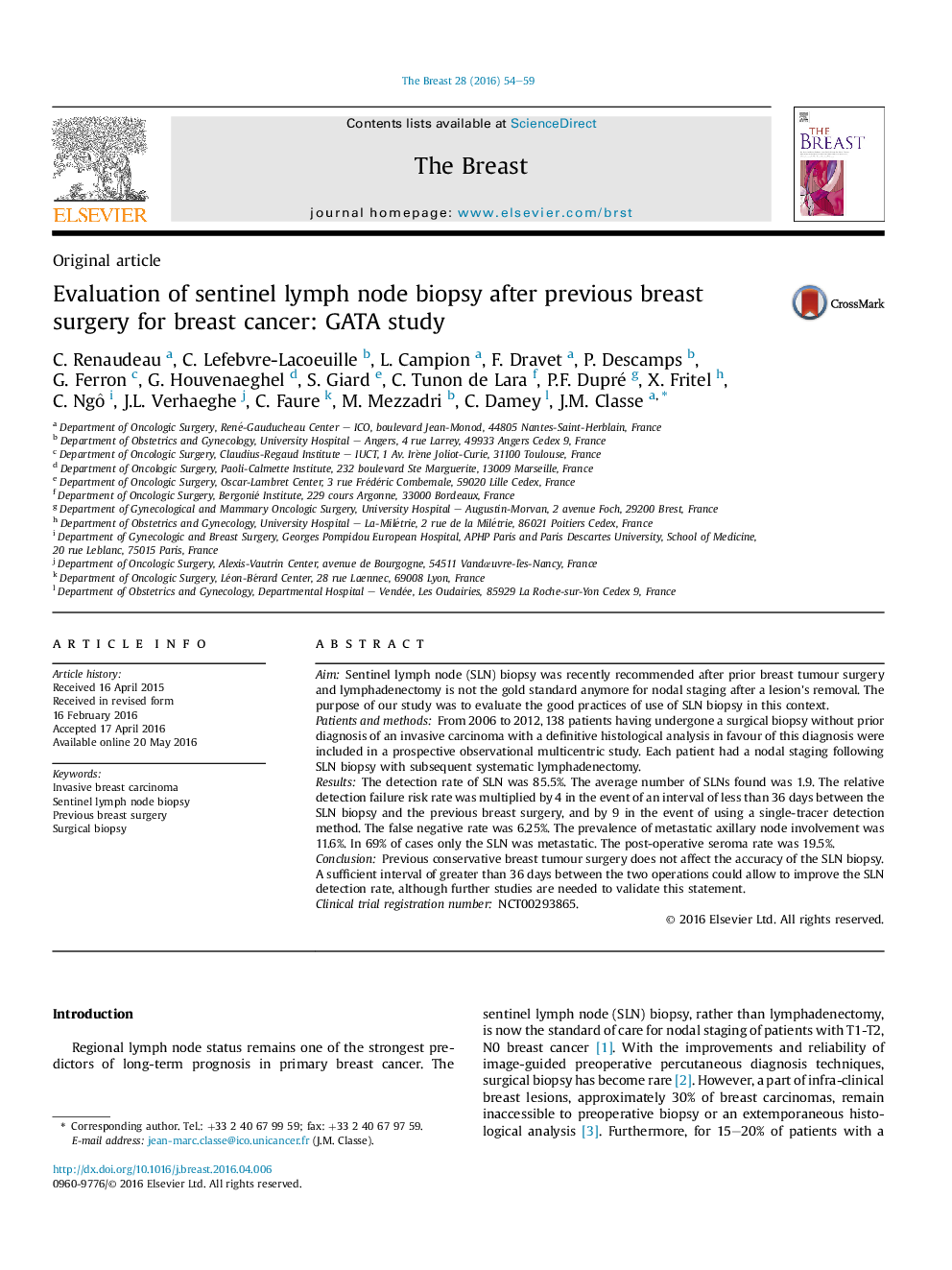| Article ID | Journal | Published Year | Pages | File Type |
|---|---|---|---|---|
| 6169535 | The Breast | 2016 | 6 Pages |
â¢The SLN biopsy in patients who have undergone prior breast surgery is accurate.â¢The identification rate of sentinel lymph node was 85.5% in our study.â¢The false negative rate of sentinel lymph node was 6.25% in our study.â¢An interval of more than 36 days after breast surgery improves the SLN detection rate.
AimSentinel lymph node (SLN) biopsy was recently recommended after prior breast tumour surgery and lymphadenectomy is not the gold standard anymore for nodal staging after a lesion's removal. The purpose of our study was to evaluate the good practices of use of SLN biopsy in this context.Patients and methodsFrom 2006 to 2012, 138 patients having undergone a surgical biopsy without prior diagnosis of an invasive carcinoma with a definitive histological analysis in favour of this diagnosis were included in a prospective observational multicentric study. Each patient had a nodal staging following SLN biopsy with subsequent systematic lymphadenectomy.ResultsThe detection rate of SLN was 85.5%. The average number of SLNs found was 1.9. The relative detection failure risk rate was multiplied by 4 in the event of an interval of less than 36 days between the SLN biopsy and the previous breast surgery, and by 9 in the event of using a single-tracer detection method. The false negative rate was 6.25%. The prevalence of metastatic axillary node involvement was 11.6%. In 69% of cases only the SLN was metastatic. The post-operative seroma rate was 19.5%.ConclusionPrevious conservative breast tumour surgery does not affect the accuracy of the SLN biopsy. A sufficient interval of greater than 36 days between the two operations could allow to improve the SLN detection rate, although further studies are needed to validate this statement.Clinical trial registration numberNCT00293865.
